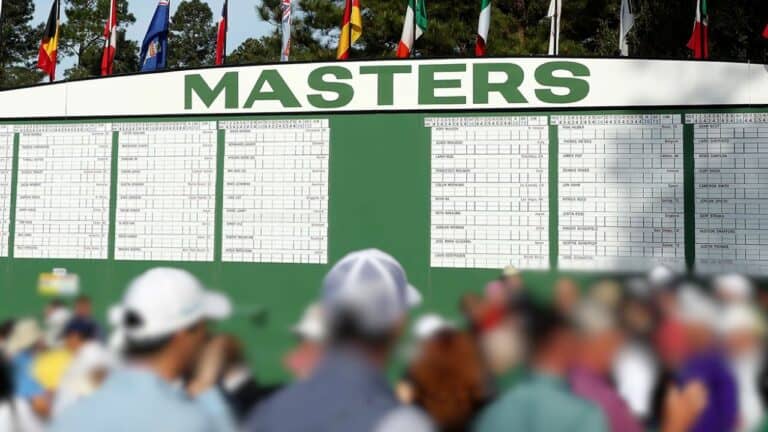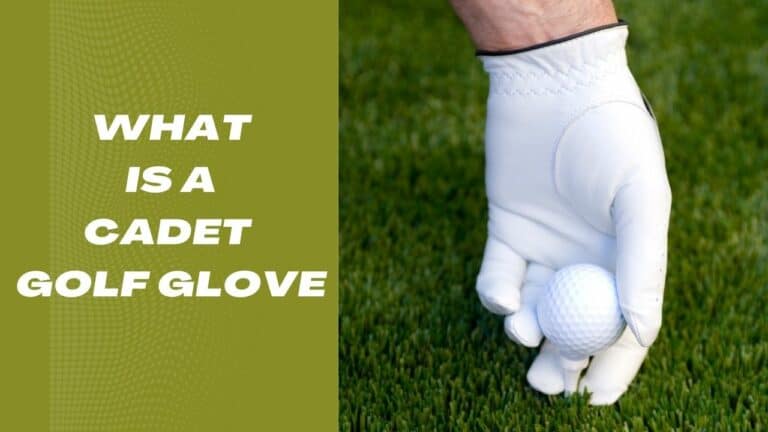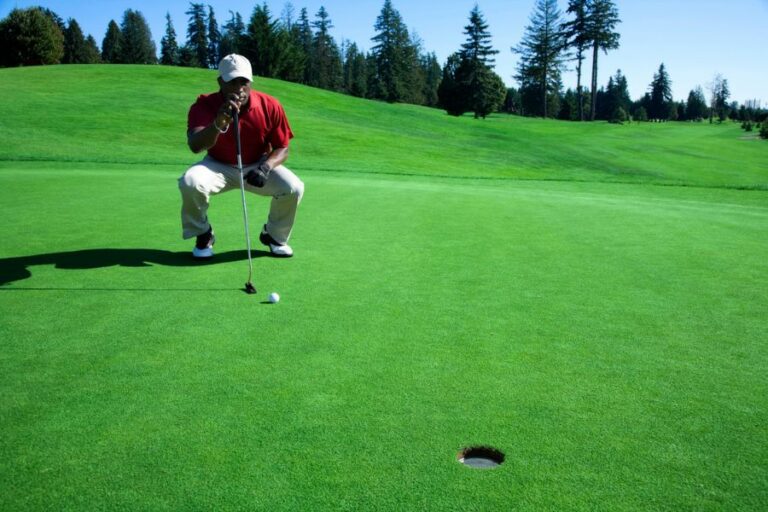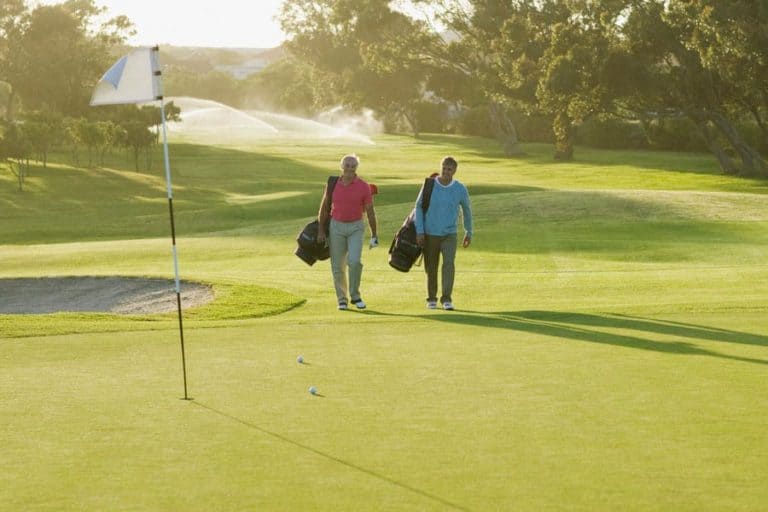How To Find Sweet Spot On Golf Irons?
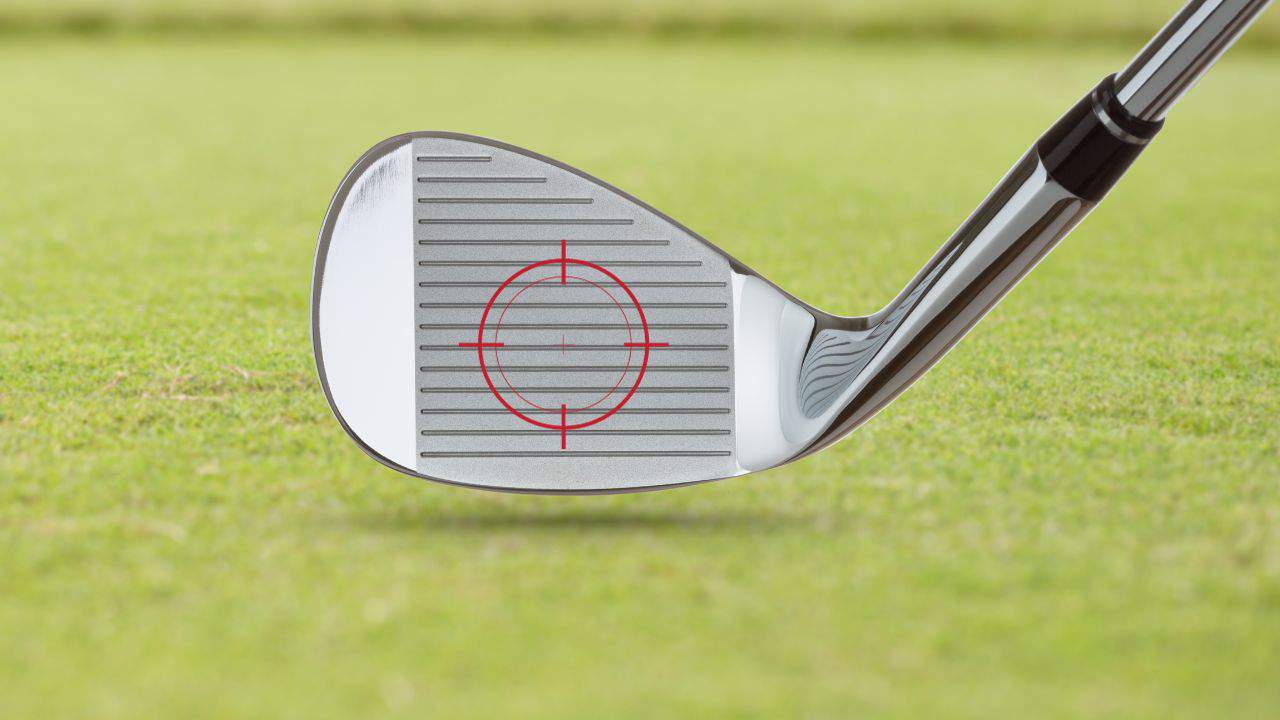
Achieving that perfect strike on your golf irons, right in the middle of the club face, is the goal for every golf player. Yet, it’s no simple job. Mastering the efficient contact of golf irons demands a deeper understanding.
This is where the “sweet spot” comes in— the focal point for optimizing your game. Here we will understand how to find a sweet spot on golf Irons and hit it consistently for a higher level of performance on the golf course.
I. Identifying the sweet spot on your Golf Irons
The exact location of the sweet spot can vary slightly among different iron golf clubs. However, it is usually located in the center of the clubface. Specifically, on an iron, you can find the sweet spot about 4-6 grooves below the central point of the clubface.
This is the area that yields the best results when struck correctly, allowing for optimal distance and accuracy. Some golf club manufacturers help out by marking this spot on their clubs.
However, not all do so. If your club doesn’t have this mark, there’s one simple thing you can follow. Lightly coat your clubface with spray foot powder. When you strike the ball, it will leave a mark on the powder, showing exactly where contact was made.
This spot, where the ball makes solid contact, is your sweet spot. By identifying and consistently hitting this spot, you can significantly improve your golf game.
II. What is a Sweet Spot?
The sweet spot refers to the optimal area on a clubface where contact with the ball should ideally be made. Hitting the ball correctly at this spot maximizes energy transfer from the club to the ball, leading to better distance, accuracy, and feel.
Size and Construction of a Sweet Spot:
- Variation in Sweet Spot Sizes: The sweet spot’s size isn’t uniform across all clubs. Drivers, for instance, typically have the broader sweet spot compared to other clubs.
- Impact of Materials: The use of lighter materials, such as titanium, contributes to the creation of larger clubheads without increasing the weight excessively. This, in turn, enlarges the sweet spot areas on the clubface.
- Perimeter Weighting: This is a technique used to increase the size of the sweet spot. It involves hollowing out the dense metal at the clubhead’s back and redistributing it towards the outer edges of the club. This redistribution leads to a larger clubface, which in turn makes the club more forgiving.
III. Science behind the Sweet Spot
The sweet spot of a golf club is fundamentally tied to the principles of center of gravity and moment of inertia. The sweetness of this spot stems from the fact that when the CoG of the clubhead aligns directly towards the CoG of the golf ball upon impact, it facilitates the most efficient energy transfer from the club head to the ball.
In simpler terms, when a golf ball is hit at the sweet spot, the club tends to twist less, resulting in more energy being transmitted to the ball. This leads to a golf shot that is both longer and straighter.
IV. Sweet Spots in Different Types of Golf Irons
Here is a table providing an overview of different iron types, their sweet spot size, and locations to optimize your golf swing and technique based on the specific iron type:
| Type of Iron | Sweet Spot Size | Location | Ideal for |
| Blades | Smaller sweet spot | Near the center | Skilled players |
| Cavity Backs | Larger sweet spot | Lower and toward the heel | Intermediate players |
| Game Improvement Irons | Largest sweet spot | Lower and toward the heel | Beginners and high-handicappers |
V. Techniques to find the sweet spot
Here are some effective techniques for finding the sweet spot on your golf club:
- Examine Wear Patterns: Check the center of your golf irons for signs of wear. This can help you identify where most of your shots land and inform you where to aim your hits.
- Utilize Masking Tape or Spray: Applying masking tape, impact tape, or a spray to the clubface can assist in identifying the sweet spot. These tools will mark the point of contact, showing you where to hit the ball.
- Bounce a Ball: By bouncing a golf ball on different areas of the clubface, you can gauge where it performs best, indicating the sweet spot. If it doesn’t bounce well, it’s likely closer to the heel or toe.
- Maintain Proper Grip and Alignment: A consistent grip and correct alignment with the ball lay the groundwork for consistently hitting the sweet spot.
- Ensure a Balanced Swing: Keeping your swing smooth and balanced improves your chances of making clean contact with the sweet spot.
VI. What happens when you miss a sweet spot
When you miss the sweet spot, the club will twist upon impact, causing a loss of energy, which results in shorter and off-direction shots. This is often called a mishit. Here’s a table showing the impact when you miss the sweet spot:
| Miss Type | Potential Outcome |
| Hitting low on the face | Often results in a lower launch angle and reduced distance but with more spin |
| Hitting high on the face | Typically produces a higher launch angle, often with less spin and possibly less distance |
| Toe Miss | Usually results in a shot that curves to the right for a right-handed player or left for a left-handed player and may lose distance |
| Heel Miss | Generally causes a shot to curve to the left for a right-handed player or right for a left-handed player and can also reduce the distance |
VII. How to improve sweet spot accuracy?
Improving the accuracy of hitting the sweet spot on your golf club can significantly enhance your game. Here are some tips to fine-tune your swing and consistently hit the sweet spot:
- Analyze Your Swing: Understanding your swing is the first step towards improvement. Use video analysis tools or seek professional help to identify and correct any flaws in your swing.
- Maintain Proper Weight Distribution: Ensure your weight is balanced on the balls of your feet, not on your heels or toes. This promotes stability and control during your swing.
- Relax Your Arms: Tension in your arms can affect your swing dynamics. Keep your arms relaxed for a smoother and more controlled swing
- Maintain Consistent Speed: Focus on keeping a consistent swing speed. Swinging too hard can lead to mishits, while swinging too softly may not deliver the necessary force.
- Increase Practice Sessions: The more you practice, the more accurate your sweet spot hitting becomes. Regular practice helps train your muscle memory, enhancing your ability to consistently hit the sweet spot.
Conclusion
Most golfers, particularly those striving to be better ball strikers, can achieve maximum distance by identifying the sweet spot on their golf irons.
This process involves an understanding of the swing path, which can be studied and refined during practice sessions. By identifying and consistently making contact with the sweet spot, golfers can significantly enhance their game.
FAQs
1. How big is the sweet spot on a golf club?
The sweet spot’s size can change based on the type and design of the club, but usually, it’s quite tiny. On an average iron, the sweet spot is about as big as a pinhead. It’s generally bigger on fairway woods and is the largest on drivers.
2. What Are The Benefits of Hitting the Golf Ball on the Sweet Spot?
Hitting the sweet spot provides maximum ball speed, optimal launch angle, and minimal spin, resulting in longer, straighter shots. It also gives a satisfying feel and sound on impact, boosting confidence.
3. Can the sweet spot change from club to club?
No, the sweet spot doesn’t change from club to club within a golf iron set. It remains constant across different types of irons, including PGA Tour and game improvement irons.
The benefit of larger clubheads is not an enlarged sweet spot, but rather a wider area for off-center hits, which helps less experienced players as they work on their swing.
4. Which Golf Irons have the largest sweet spot?
Golf irons labeled as super game improvement clubs, like TaylorMade Sim Max and Mavrik Max, boast the largest sweet spots, providing enhanced forgiveness and distance. While beneficial for mid to high handicappers, larger sweet spots may limit control over ball flight, particularly for fades or draws.
Player’s irons, with smaller sweet spots, offer more shot control but are less forgiving. When seeking the largest sweet spot, consider trade-offs between forgiveness and control based on your skill level and preferences.



